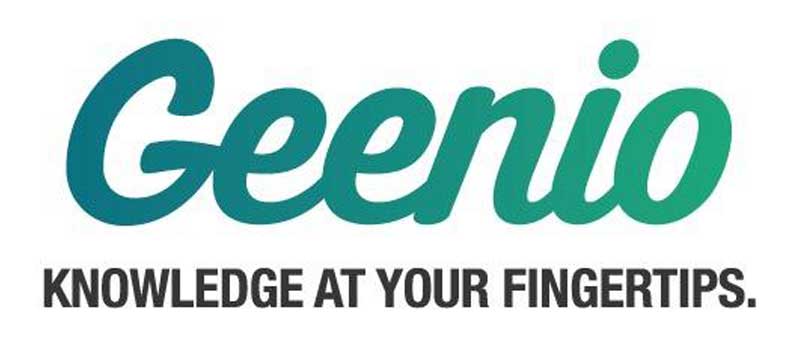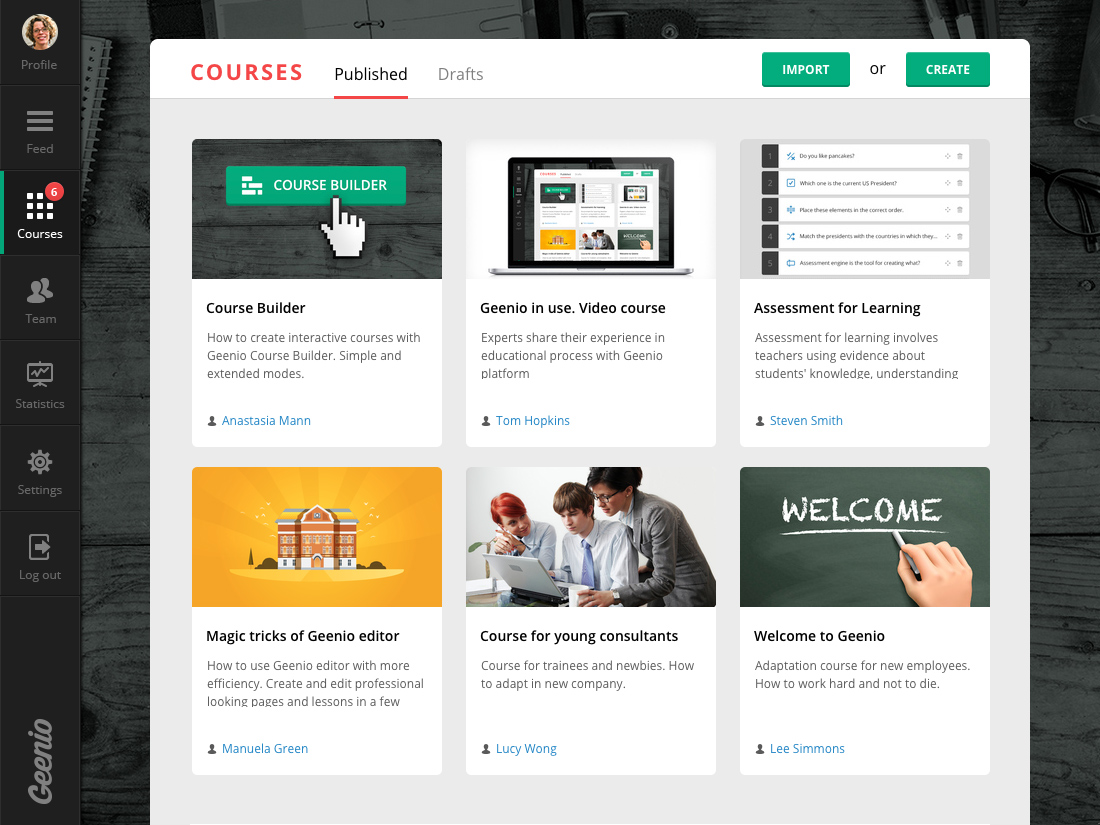May 04, 2015 8 Questions With: Geenio
Geenio is a next generation learning system that empowers you to create, organize and improve your corporate and professional learning process. Whether you’re looking to educate your customer base, streamline your new-hire on-boarding process, improve your sales team’s methodologies, or educate your partners to better work with your products, Geenio appears to be taking e-learning to an entirely new level. The company was founded by CEO, Konstantin Andreev, who drives the company’s vision, strategy, and growth, while overseeing the day-to-day operations. Always pushing the status quo, Mr. Andreev aims to revolutionize the industry with ideas that change the way people live. He began his career in the financial sector working for companies such as Citigroup and American Express, and is a seasoned management consultant and entrepreneur.
1) What is Geenio and how did you get involved?
Doing business – any business, really – one inevitably has to deal with hiring and training personnel. You need to ensure that your people develop and grow as professionals. We made a number of attempts to apply already existing tools to these problems before giving up. They just did not work, we needed something else. We felt that educating your employees had to be much cheaper, take less effort, and actually, you know, be fun for everyone involved. This led to the creation of Geenio, which is a platform full cycle learning processes can be built upon.
2) What is the biggest differentiator between Geenio and other e-learning platforms?
These days, there are quite a few E-learning solutions on the market, both veterans of the industry, notoriously slow to adapt to the shifting technological landscape, and new players, building old tools with the new technology available. We set out to do something that is fundamentally new and different, a next gen E-learning solution incorporating best practices from a wide range of industries.
Our offering is a complete suite of tools, covering the whole gamut from authoring a course to organizing and controlling the educational process, that is, at the same time, budget conscious.

3) How’s the learning curve for an instructor to create a course? Seems like it can potentially be a hurdle for those who aren’t as tech savvy.
When we set on creating a new product, user scenarios take center stage, it is something that we pay a lot of attention to. If a feature proves to be too complicated for an average user, we drop it. That is why I can say with confidence that you can become reasonably proficient with Geenio in just a few hours.
One of the chief objectives we set for ourselves was to create a system that would enable a subject matter expert to create a professional course, one that would help them share their expertise, without having to pick up any additional skills. And I think we did a pretty good job of it, too. All that is required is for the expert to have access to a web browser and some basic presentation creation skills. The complexity of the course is only limited by the author’s imagination – by the way, Geenio introduces non-linear transitions between course elements, something that nobody did before us.
4) I noticed the most popular subscription is your business option – can you share some insight into what skillsets or learning processes that these companies tend to use Geenio for?
The chief selling point of our product is that it can really be applied in a wide spectrum of real-life scenarios. Teaching and growing your personnel, educating your customers and partners, you name it. Education and assessment impacts most key business metrics, and it is hard to imagine a mature company that does not have at least some teaching processes in place.
The primary usage scenario is training the staff dealing with the customers directly, as they are usually the ones most often having to deal with workflows and metrics. The scenario that shows the most promise, in our opinion, is constantly educating your customers, especially in the health and service industries. This drives customer loyalty and, in turn, customer revenue.
The most fun scenario is probably creating trainings for the staff in the form of business games. Our product handles it well, as you can create non-linear scenarios that allow for branching narratives. Geenio also enables the top performers to transfer their expertise, which both makes their life easier and helps to streamline the business processes.

5) As a kid, what did you want to be when you grow up?
To tell the truth? An astronaut. Now I hope that Geenio will play a role in training future astronauts. This would help us finally get off this rock, I am sure.
6) How big is your current team and what does a typical workday look like for you?
At the present moment we have a few dozen people aboard, mostly developers. The atmosphere is very relaxed, but everyone is doing their best to pull their weight. We synergize by identifying what areas every employee particularly excels in, and then dividing the tasks accordingly.
Anyone can come forward with an idea, which is then discussed during a meeting called specifically for that purpose. If the idea is good, we implement it, simple as that. We value the creative approach and like keeping busy.
There is no set schedule, people come and go as best fits their life-work balance. Those who prefer to work remotely are more than welcome to do so. This approach lets everyone pick the hours of the day they are most productive in to work on the project.

7) What’s next for Geenio?
In the short term, we are looking into integrating Geenio with other business applications, as well as the possibility of importing content created in third-party solutions. As for improvements to Geenio proper, we are burning a lot of midnight oil to implement a synchronous distance learning solution, as well as other means of collaboration.
In the long term, we are preparing to roll out new products targeting other audiences, for example an online store for web-based self-help courses. There is also a product in the works that will enable us to leverage our technology to target a whole new audience, but that is all I can tell you at the moment 🙂
8) If you could give some advice to your teenage self, what would it be?
Do not be afraid to experiment. Create solutions for real world problems.


